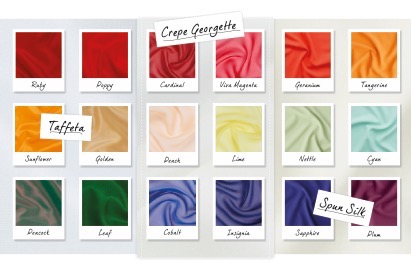
Silk does for the body, what diamonds do for the hand
This quote by designer Oscar de la Renta is so true. Silk is a unique, naturally beautiful, luxurious, lustrous fabric that has historically been associated with wealth and prestige. It has always been recognised as a status symbol, so no wonder that it is known as the Queen of Fibres.
Silk is a particularly sustainable and eco-friendly fabric: it is a natural protein fibre produced by silkworms and is biodegradable. The mulberry trees, which provide the silkworm’s main diet, are replanted and grown in soil, much like the cotton plant to add another layer of sustainability to the production of silk.
Apart from its appearance and feel, silk has many hidden attributes: it has exceptional thermoregulatory properties, helping to regulate body temperature by keeping the wearer cool in hot weather and warm during colder spells. It is also hypoallergenic and absorbs and wicks away moisture from the body, keeping it dry and comfortable.
Silk comes in many different weights, textures and finishes, making it a versatile choice for daywear, eveningwear, bridalwear, lingerie, costumes, accessories and interiors.
There are dozens of versions of 100 per cent silk fabrics and the choice is extended further by blends with other fibres, including cotton, viscose and wool.
The numerous finishing processes include those that are physical and chemical. Finishing is the stage where, for example, satin is given its shimmering suppleness and the surface of the fibre broken to create a soft, matt appearance like suede, often known as sandwashed silk.
Treatments such as crease-proofing, water-proofing and fire-proofing can also be added.




